#Lucrezia Duchess of Ferrara
Text
Book Review - ‘The Marriage Portrait’ by Maggie O’Farrell
Frankly I couldn’t fault this book. It was engaging to read, and the characters came across as real people which is really important when writing historical fiction. Don’t confuse Lucrezia d’Medici with Lucrezia Borgia, though the two are related – Lucrezia d’Medici (the subject of this novel) was married to the grandson of Lucrezia Borgia (Alfonso d’Este). It’s strange to think that while this…

View On WordPress
#16th Century#Alfonso Duke of Ferrara#Book#Book Review#Ferrara#Fiction#Florence#Italy#Lucrezia D&039;Medici#Lucrezia de Medici#Lucrezia Duchess of Ferrara#Maggie O&039;Farrell#Marriage Portrait#Novel#Renaissance#Renaissance Italy#Review#The Marriage Portrait
0 notes
Photo

20 notes
·
View notes
Text

Two or three of her ladies-in-waiting were pretty. One danced well and another, Lucrezia’s cousin Angela Borgia, was charming. Without her knowing, El Prete had picked her as his favorite. Angela’s charm would be the source of great tragedy in Ferrara; even then it must have been one of the reasons for the nightly visits Alfonso’s brothers made to Lucrezia’s palace.
She was the illegitimate daughter of Guillem Ramon de Borja and Sanoguera, son of Otic de Borja y Montcada and his wife Violant Sanoguera. Her mother was Isabel de Montcada. She was also a niece of Cardinal Rodrigo Borgia, later Pope Alexander VI .In her youth she lived in Rome alongside her cousin Lucretia Borgia, whom she accompanied to Ferrara when she married Alfonso I d'Este, Duke of Ferrara
Considered as a woman of great beauty, elegance, romantic, with an exquisitely feminine personality. She was absolutely trustworthy friend, confidant of the innermost secrets, favorite companion and assistant to her favorite cousin Lucretia. She won the praise of men of letters as Diomede Guidalotti who dedicated two sonnets to her, and even Ludovico Ariosto dedicated the last canto of Orlando Furioso to her. Pietro Bembo idealized her as an "angel that can pray for me." On 1 August 1504, in the dedication of his "Gli asolani" to the duchess Lucrezia Borgia refers back to his Angela, indicating that Lucrezia's cousin and maiden is "the dear and gallant Madonna Angela Borgia".
#perioddramaedit#history#angela borgia#angela borja#borgia#cortegiania#lucrezia borgia#the borgias#lily james#donne della storia#donne nella storia#donneitaliane#donne italiane#women of history#renaissance women#italian renaissance#women of renaissance#renaissance italy#renaissance#rinascimento#lilyjamesedit#otoc de borja#cesare borgia#rodrigo borgia#isabel de montcada#giulio d'este#ippolito d'este#ferrara#women in history#pietro bembo
70 notes
·
View notes
Photo






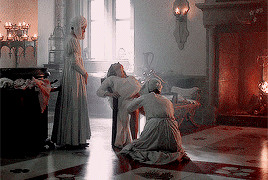

→ history + alfonso d’este and lucrezia borgia
requested by noesapphic
Although Ercole reported happily to the Pope that Alfonso and Lucrezia 'gave each other pleasure’, that did not mean they loved each other. It was a marriage of state, eagerly entered into by the one, reluctantly by the other. Lucrezia was not attracted by Alfonso’s rough ways and manners and reserved character, but she had achieved her ambition and she was determined to make a sucess of her career as Duchess of Ferrara. — Sarah Bradford, Lucrezia Borgia: Life, Love and Death in Renaissance Italy
#historyedit#alfonso d'este#lucrezia borgia#15th century#16th century#early modern history#borgiaedit#italian history#*history#*mine#*requests#*historical couples#noesapphic#i hope you like it!
276 notes
·
View notes
Text
Florence, the 1550s. Lucrezia, third daughter of the grand duke, is comfortable with her obscure place in the palazzo: free to wonder at its treasures, observe its clandestine workings, and devote herself to her own artistic pursuits. But when her older sister dies on the eve of her wedding to the ruler of Ferrara, Modena and Reggio, Lucrezia is thrust unwittingly into the limelight: the duke is quick to request her hand in marriage, and her father just as quick to accept on her behalf.
Having barely left girlhood behind, Lucrezia must now enter an unfamiliar court whose customs are opaque and where her arrival is not universally welcomed. Perhaps most mystifying of all is her new husband himself, Alfonso. Is he the playful sophisticate he appeared to be before their wedding, the aesthete happiest in the company of artists and musicians, or the ruthless politician before whom even his formidable sisters seem to tremble?
As Lucrezia sits in constricting finery for a painting intended to preserve her image for centuries to come, one thing becomes worryingly clear. In the court’s eyes, she has one duty: to provide the heir who will shore up the future of the Ferranese dynasty. Until then, for all of her rank and nobility, the new duchess’s future hangs entirely in the balance.
Full of the beauty and emotion with which she illuminated the Shakespearean canvas of Hamnet, Maggie O’Farrell turns her talents to Renaissance Italy in an extraordinary portrait of a resilient young woman’s battle for her very survival.

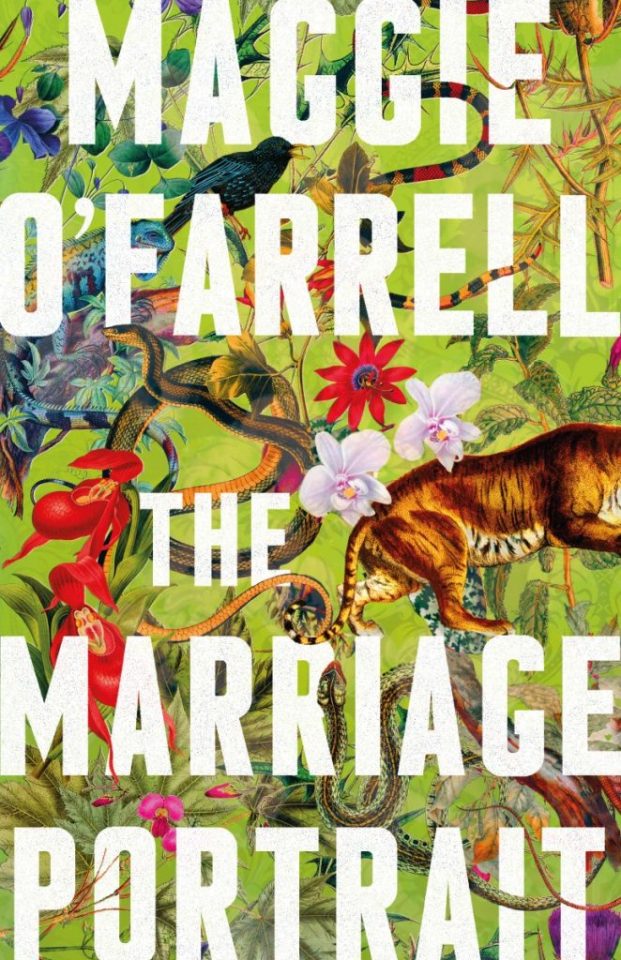
#book: the marriage portrait#author: maggie o'farrell#genre: historical fiction#genre: literary#year: 2020s
8 notes
·
View notes
Photo
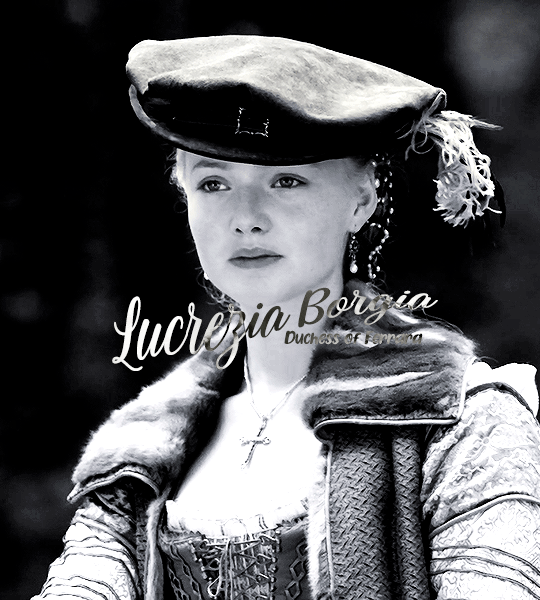

Borgia, Lucrezia, in “Dominae fortunae suae [Mrs. own Fortune]. La forza trasformatrice dell’ingegno femminile [The transforming power of female ingenuity ]":
Lucrezia, a Ferrara, diede anche prova di una compiuta maturità politica e istituzionale. Nell’agosto del 1503 era morto suo padre, Alessandro VI, e al soglio papale veniva eletto, dopo il breve pontificato di Pio III, l’acerrimo nemico dei Borgia, papa Giulio II (della Rovere). Il nuovo ordine politico portò, dopo una breve resistenza, alla riconquista pontificia della signoria romagnola di Cesare Borgia, nonostante gli aiuti militari inviati dalla sorella. Nel 1505, dopo la morte del duca Ercole I d’Este e l’incoronazione del marito Alfonso, Lucrezia divenne ufficialmente duchessa di Ferrara. In questi anni ella svolse con diligenza le mansioni che il marito le affidava sia in tempo di pace, sia durante le assenze per le campagne militari. Fu deputata dal marito alla gestione delle istanze dei cittadini presso il principe, che svolse, come riferisce un relatore contemporaneo, con “ingegno e bona gratia”.
Lucrezia, in Ferrara, also gave proof of a complete political and institutional maturity. In August 1503 his father, Alexander VI, had died and he was coming to the papal throne elected, after the brief pontificate of Pius III, the bitter enemy of the Borgias, Pope Julius II (della Rovere). The new political order led, after a short resistance, to the reconquest papal of the Romagna lordship of Cesare Borgia, despite the military aid sent from his sister. In 1505, after the death of Duke Ercole I d’Este and the coronation of husband Alfonso, Lucrezia officially became Duchess of Ferrara. In these years she she diligently carried out the duties that her husband entrusted to her both in peacetime and during absences for military campaigns. She was deputed by her husband to the management of the petitions of citizens to the prince, which he carried out, as reported by a speaker contemporary, with “ingenuity and bona gratia”. (David Salomoni)
#historyedit#perioddramaedit#lucrezia borgia#the borgias#theborgiasedit#userperioddrama#gifshistorical#userclayy#userlj#userhayf#userkristen#duchessofhastings#ours#by tha
204 notes
·
View notes
Text
Guest post from John Martin Rare Book Room
Hardin Library of the Health Sciences
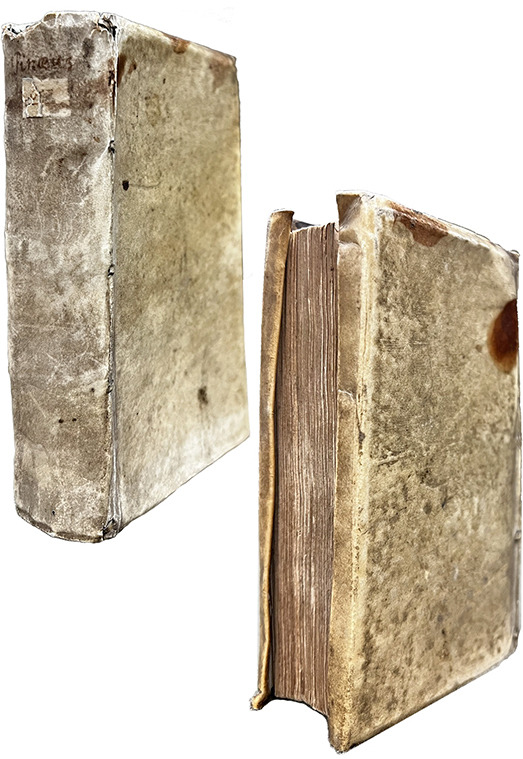
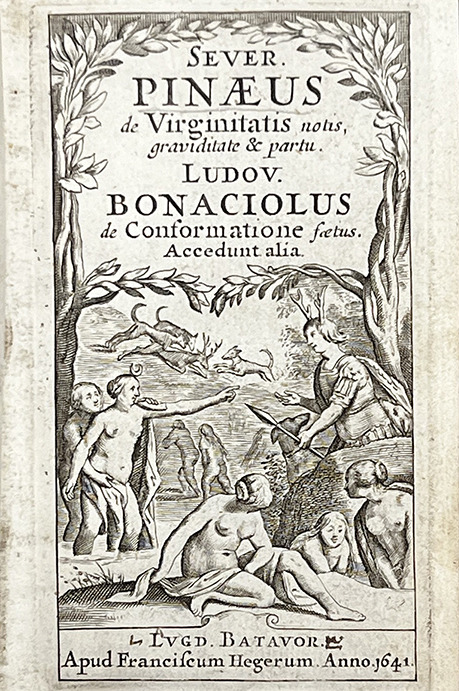

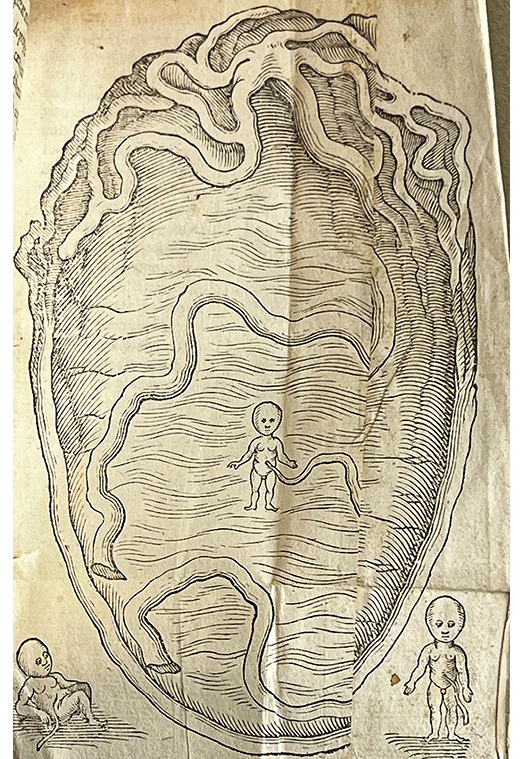
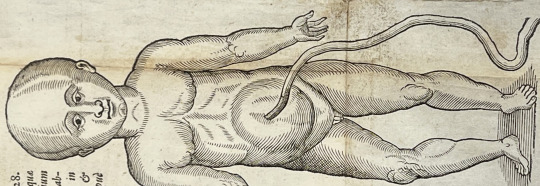
PINEAU, Severin (1550?–1619). De integritatis et corruptionis virginum notis: graviditate item & partu naturali mulierum, opuscula.
BONACCIUOLI, Luigi (d. 1540). Enneas muliebris.
PLATTER, Felix (1536-1614). De origine partium, earumque in utero conformatione.
GASSENDI, Pierre (1592-1655). De septo cordis pervio, observatio.
SEBISCH, Melchior (1578-1674) De notis virginitatis.
Third edition. Printed in Leiden by Francis Heger, 1641. 28 pages. 13 cm tall.
We are big fans of tiny books here at the JMRBR. And banned books, too. So we thought we would highlight a curious little book packed with a number of treatises on obstetrical and gynecological topics, once considered so risqué that it was condemned and banned in several locations. Not coincidentally, it was also a hit that spurred the printing of several editions. The book is also fascinating for its illustrations.
This volume is a collection of gynecological and obstetrical texts. The content, especially the first and last works, caused quite a stir due to the frankness and detail regarding virginity (and how it is lost), pregnancy, and childbirth - so much so that it was confiscated in many locations. Naturally, it was also very popular and printed in several editions.
And by "virginity," the authors specifically mean female virginity. Authors of early medical works surprisingly did not seem too interested in male virginity! All snarkiness aside, the study of female anatomy and physiology, especially of anything to do with sex, pregnancy, and birth, has a long and problematic history. We encourage you to read more about this history here and here and here and here. This is by no means an exhaustive list.
Five works are gathered under the main title, De integritatis et corruptionis virginum notis: graviditate item & partu naturali mulierum, opuscula [On the integrity and corruption of known virgins], by the 16th-century French surgeon Séverin Pineau (1550?–1619). Pineau was born in Chartres but trained and practiced in Paris and was surgeon to several French kings. He is most known for his works on gynecological and obstetrical topics, including as an advocate for symphysiotomy (also known as a pelviotomy), a procedure performed on women in labor in which the cartilage of the pelvis is cut to widen it when there is a problem with the position of the baby. This procedure is rarely performed today, with caesarean section preferred instead.
De integritatis et corruptionis virginum notis first appeared as part of Pineau's 1597 work, Opusculum physiologum & anatomicum in duos libellos distinctum. It is divided into two parts. The first provides anatomical descriptions of female genitalia. Interestingly, Pineau uses metaphors when naming certain parts. It was common among French midwives at the time to use metaphors instead of anatomical terms when describing female sexual anatomy (e.g., babolle abbatue), while our old friend, Louise Bourgeois, avoided both metaphor and specifics, referring instead to general areas of anatomy.
The first part of Pineau's work also lists problems that can occur during pregnancy and labor and surgical methods for treating the problems. The second part covers formation of the fetus. Several interesting woodcut illustrations accompany Pineau's text, including the muscle-bound fetus above.
The second treatise is by Luigi Bonacciuoli (d. 1540s). Bonacciuoli was a physician and anatomist who specialized in obstetrics and practiced at the University of Ferrara in Northern Italy. Enneas muliebris [Treatise on Women in Nine Parts], first printed in about 1505, is a work on obstetrical and gynecological topics based on Bonacciuoli's university lectures. It contains a lengthy dedication to Lucrezia Borgia, the duchess of Ferrara and daughter of Pope Alexander VI and one of the most powerful female leaders of the time.
In the book, Bonacciuoli describes the anatomical structures, such as the mons veneris, the clitoris, and the hymen, and includes a chapter detailing how the fetus is nourished and when fetal movements develop. Other chapters include discussions of the signs of conception, the causes and signs of abortion, delivery, and care of the newborn. He based most of his material on classic works.
The next title belongs to Felix Platter (1536-1614), a Swiss physician and anatomist who practiced at the University of Basel. He remained city physician until his death and was successful in developing the medical school into one of the strongest and finest in Europe. Platter is credited with performing the first public dissection of a human body in a Germanic country and is said to have dissected over 300 bodies during his career. He was widely respected as a teacher and was a physician of great courage who remained in Basel to treat the sick on five occasions when the black plague struck the city. As one of the early nosologists (classifier of diseases), Platter recognized three classes of diseases based on their natural history and postmortem findings and distinguished four types of mental illness. He is best known for his De corporis humani structura et usu, published in 1583.
De origine partium, earumque in utero confirmatione [On the origin of fetal anatomy and formation in the womb] focuses on the formation of the fetus. Platter is chiefly concerned with the origin of the arteries, veins, and nerves from the brain and the relationship of the veins to the heart and liver. This work first appeared in Platter's De corporis humani structura et usu.
The next treatise belongs to the famed French philosopher, astronomer, and mathematician (and opponent of William Harvey), Pierre Gassendi (1592–1655). A Catholic priest with a doctorate in theology, Gassendi was a professor of philosophy and mathematics and believed that experimentation and observation were necessary for the study of science and nature. Among many other contributions to science and philosophy, he is known for the first recorded observation of the transit of Mercury across the sun.
De septo cordis pervio, observatio [Observation on the septum of the heart] is the only appearance in print of this work; there is no separate edition. Gassendi gives the first description of the foramen ovale, a passageway in the fetal heart that allows blood to flow to the left atrium from the right atrium, which closes as the heart fully forms.
The final title is from the Strasbourg physician Melchior Sebisch the Younger (1578-1674). Sebisch (aka Sebizius, Sebizii, and others) was a professor of medicine at the University of Strassbourg, where he eventually took over for his father (Melchior Sebisch the Senior) as the Chair of Medicine. Like many of the other authors on this list, he has many publications to his credit, particularly translations of and commentaries on Galen.
De notis virginitatis [On the characteristics of virginity] bookends Pineau's De integritatis by providing another treatise on the physical signs of female virginity.
The volume is bound in contemporary limp vellum with yapp edges, another callback to our discussion of Louise Bourgeois. The cover shows clear signs of use and aging, with a yellow discoloration, scratches, and staining. The paper is in great condition, with the exception of a torn page and the larger fold-out woodcut illustrations, which have seen a lot of use.
Along with workout warrior fetuses, there are other curious images throughout the book, including the tiny, fully-formed fetus swimming in the cavernous womb seen just above. It is joined by two other fetuses, including one that appears to be taking a moment for some serious rest and reflection.
Most of the illustrations are derived from the work of Guilio Cassesrio, a 16th-century Italian anatomist lauded for the artistry of his illustrations. Each of the fold-outs was also repaired at some point, which unfortunately means we lost part of each image. You can see evidence of these repairs in the womb image.
--Curator Damien Ihrig
#history of medicine#uiowa#libraries#special collections#jmrbr#hardin library#birth#babies#women health#banned books#anatomy#history
56 notes
·
View notes
Text
Lucrezia Borgia, duchess of Ferrara.
A biography.
Illustrated by rare and unpublished documents. By William Gilbert.
Description
Tools
Cite thisExport citation fileMain AuthorGilbert, William, 1804-1890.Language(s)English PublishedLondon, Hurst and Blackett, 1869.
SubjectsBorgia, Lucrezia, > Borgia, Lucrezia, / 1480-1519.
Physical Description2 v. front. (port.) 19 cm.
2 notes
·
View notes
Text
‘The Marriage Portrait’ by Maggie O’Farrell
Genre: Adult Fiction – Historical
Published: 2022
Format: Paperback
Rating: ★★★★★
Frankly I couldn’t fault this book. It was engaging to read, and the characters came across as real people which is really important when writing historical fiction. Don’t confuse Lucrezia d’Medici with Lucrezia Borgia, though the two are related – Lucrezia d’Medici (the subject of this novel) was married to the…

View On WordPress
#Book#Book Review#Duchess of Ferrara#Fiction#Historical#History#Italy#Lucrezia d&039;Medici#Lucrezia de Medici#Maggie O&039;Farrell#Novel#Renaissance Italy#Review#The Marriage Portrait
0 notes
Text
I love you Katharine of Aragon queen of England; I love you Joanna I of Castile; I love you Lucrezia Borgia duchess of Ferrara; I love you Mary Tudor queen of England…-
1 note
·
View note
Text
Lucrezia de' Medici was the apple of her father's eye. As the third daughter of the grand duke, she was content with her obscure place in the palace. She spent her days admiring the treasures, the clandestine workings and engaging in her artistic pursuits without any concern about the outside world.
However, her life took an unexpected turn when her older sister unexpectedly passed away before her wedding to the regent of Ferrara, Modena and Reggio. The Duke quickly requested her hand in marriage, and her father was quick to accept on her behalf.
Lucrezia, having barely left her girlhood behind, must now enter an unfamiliar court whose customs are opaque and where her arrival is not universally welcomed. Most mystifying of all is her new husband, Alfonso, who is not what he seems to be.
In this historical fiction, Maggie O’Farrell weaves a story of a young woman's battle for her very survival. As Lucrezia starts to navigate through the unfamiliar court, she faces various challenges that eventually compel her to fight for autonomy.
From the author of Hamnet, O’Farrell brings the world of Renaissance Italy to life in an unforgettable fictional portrait of the captivating young duchess Lucrezia de' Medici. Her writing style is so vivid and immersive, I could barely put the book down. The imagery is breathtaking and the characters are so well-crafted that readers can't help but feel invested in their fates.
The novel is set in Florence, Italy, during the 1550s. O'Farrell's attention to historical detail is impressive, and she successfully transports readers to a bygone era that is rich in tradition and culture. By lacing the narrative with little threads of historical detail, she creates an immersive and authentic experience for readers.
Lucrezia's character is captivating, and you can't help but root for her throughout the story. She's intelligent, ambitious, and resilient - the perfect combination of qualities for a leader. Her fight for autonomy and independence is awe-inspiring, and her journey is both emotional and empowering.
In the court's eyes, Lucrezia has one duty: to provide an heir who will shore up the future of the Ferranese dynasty. Until then, for all of her rank and nobility, the new duchess's future hangs entirely in the balance. This puts immense pressure on her throughout the book, as she feels like her worth is measured solely by her ability to produce an heir.
However, despite the heavy themes, the story is ultimately a riveting tale about one woman's fight for autonomy. It's a story that empowers readers to embrace their individuality and to never stop fighting for what they believe in.
In conclusion, I could not put this book down. Maggie O'Farrell's writing style is so captivating that it transports readers to another world. The characters are well-crafted, the storyline is immersive, and the themes are both empowering and thought-provoking. If you're a fan of historical fiction, then this book is an absolute must-read. So, grab a copy and prepare to be transported to Renaissance Italy!
Don't miss out on the thrilling experience of "insert book title here"! Get your hands on a copy now or sign up for a 30-day trial on Audible and immerse yourself in the captivating story. Don't wait, indulge in this incredible adventure today!
Price: [price_with_discount]
(as of [price_update_date] - Details)
0 notes
Text
(PDF) [Download] The Marriage Portrait BY : Maggie O'Farrell
EPUB & PDF The Marriage Portrait | EBOOK OR PDF ONLINE DOWNLOAD
by Maggie O'Farrell

Ebook PDF The Marriage Portrait | EBOOK ONLINE DOWNLOAD
If you want to download free Ebook, you are in the right place to download Ebook. Ebook/PDF The Marriage Portrait DOWNLOAD in English is available for free here, Click on the download LINK below to download Ebook After You 2020 PDF Download in English by Jojo Moyes (Author).
Download Link : [Downlload Now] The Marriage Portrait
Read More : [Read Now] The Marriage Portrait
Description
From the author of the breakout New York Times best seller Hamnet?winner of the National Book Critics Circle Award?an electrifying new novel set in Renaissance Italy, and centering on the captivating young duchess Lucrezia de Medici. Florence, the 1550s. Lucrezia, third daughter of the grand duke, is comfortable with her obscure place in the palazzo: free to wonder at its treasures, observe its clandestine workings, and to devote herself to her own artistic pursuits. But when her older sister dies on the eve of her wedding to the ruler of Ferrara, Moderna and Regio, Lucrezia is thrust unwittingly into the limelight: the duke is quick to request her hand in marriage, and her father just as quick to accept on her behalf. Having barely left girlhood behind, Lucrezia must now make her way in a troubled court whose customs are opaque and where her arrival is not universally welcomed. Perhaps most mystifying of all is her new husband himself, Alfonso. Is he the playful sophisticate he
0 notes
Text
The Marriage Portrait
By Maggie O’Farrell
An example of impeccable, sparkling rich prose – think red-wine sauce or cream cakes! Every character, place and event shines with an exquisitely beautiful style.
It’s a long time since I read Dickens, but I remember his descriptions of London as cold, grey, malodorous and poverty-stricken, whereas O’Farrell brings to life the glorious sunny warmth of Italian summers, with vibrant colours of plants, paintings and costumes.
Hats off to historical novelists, especially O’Farrell, for their assiduous research, not only into events, but also into the buildings, clothes, pastimes, food and the cultural mores of their chosen period (here, it’s the mid-sixteenth century).
Lucrezia, Duchess of Ferrara, is a young, talented artist who appreciates the work of other painters. She loves animals and birds, she relishes being outside, even in winter, but is imprisoned emotionally by a dutiful marriage, with fear flickering subtly at the edges of her understanding, and physically in the castello of her two-faced husband, Duke Alfonso II.
How cleverly O’Farrell uses the environment to portray characters’ ruminations: ‘Minuscule insects are circling and gathering above the hazel tree, as if they’re consulting with each other about some matter and all are undecided. The mule tosses her head, flicking the soft, furred triangles of her ears back towards Lucrezia, then forward to Alfonso, then back again, as if she is trying to follow their conversation, trying to decide what is happening within this marriage.’
How subtly she creates atmosphere: ‘The boughs of the hazel tree, stirred by gentle gusts of air, make tortured, evanescent shapes against the lapis sky.’
I love authors’ notes at the end of historical novels, where they aim to absolve themselves from inaccuracies or beg for leniency for alterations. No need here. The ending is dazzling, breath-taking and daringly clever.
1 note
·
View note
Text
The Marriage Portrait
Strong willed teenage girls have been in literature since Shakespeare’s thirteen year old Juliet. Maggie O’Farrell uses Browning’s poem “My Last Duchess” and the Macchiavellian intrigue of the sixteenth century to create a fascinating tale of the young Duchess of Ferrara.
Lucrezia may be an outcast in her family, not quite fitting in with her dark haired subserviant sisters and her entitled…
View On WordPress
#books#historical fiction#Italy#Maggie O&039;Farrell#My Last Duchess#reading#relationships#sixteenth century#The Marriage Portrait#women
0 notes
Text
The Marriage Portrait by Maggie O'Farrell @TinderPress @PublicityBooks
This book is a dream to read and is a book to lose yourself in. A hugely enjoyable, fascinating and immersive read.
Source: Review copyPublication: 30 August 2022 from Tinder PressPP: 448ISBN-13: 978-1472223845
My thanks to Tinder Press for an advance copy for review
‘Someone swore that, as a little girl, he once saw you touch a tiger. And that the tiger didn’t harm you, it let you stroke it. It was always said that you had charmed the beast.’
Winter, 1561. Lucrezia, Duchess of Ferrara, is taken on an…

View On WordPress
0 notes
Text
Winter reading challenge: final update

Hear ye, hear ye. Against all expectations I did in fact finish a challenge this time. I have no idea how this happened to be honest. This will be the last update, but I will also post separately a wrap up of the challenge with all the links to the books reviews. Meanwhile if you are interested here's the link to my first update for the challenge, and here's the link to the second update.
The Marriage Portrait by Maggie O'Farrell for the pretty cover prompt:
Both editions of this book have very pretty covers in my opinion. My own is super colorful and just looks great in my opinion. I fell in love with this author last year, and this book confirmed that I will read any historical fiction by Maggie O'Farrell. This one in particular is set in Renaissance Italy and is inspired by the life and death of Lucrezia de Medici who became duchess of Ferrara after marrying Alfonso II d'Este. It was a stunning novel that hit me with lots of emotions, and as I said it made me fall even more in love with the author.
Who Goes There? by John W. Campbell for the (modern) classic prompt:
On the other hand this book was a disappontment. I firstly had another book planned for this prompt, but since I am taking my time with that I switched it for this novella. This is the book that inspired the movie The Thing, and I hated every page of it. I couldn't care less for the characters, it felt messy, and what makes me particularly annoyed is that I absolutely love the trope of this book. This classic sci-fi horror book deals with an exploration of Antartica where the characters find an alien creature seemingly frozn in the ice. Of course the thing is not dead and will create chaos in their camp. As I said I love this trope, but the book not so much.
The individual book reviews are linked in the titles above as usual.
#winter reading challenge#studyblr w/knives reading challenge#bookblr#booklr#reading challenge update#reading#reading challenge#book recs#book reviews#book recommendations#studyblr#book#bookish#knife gang#mine#the---hermit#studyinspo
5 notes
·
View notes